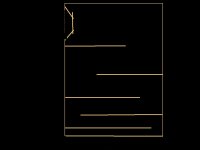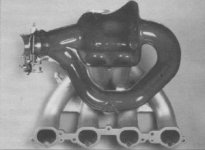Dave,
But I think this feature of echo removal is one of those things that should be relatively easy. Like a waterfall plot, or the previously seen FR graph with regular anomalies. That's different from talking about sealed or open TL speakers in general.
Are you saying : A TL beats a sealed box to my ears so I'm always going to prefer it? 🙂 That's cool. I have my own things like that. I'm just wondering about the idea that was used in the marketting. Is this lack of slap back a major contributor to the sound do you think?
Maybe there's a way to simulate this with DSP. 🙂 That is, add an echo and then attempt to play music with/without it (assuming we can measure the original).
Best,
E
But I think this feature of echo removal is one of those things that should be relatively easy. Like a waterfall plot, or the previously seen FR graph with regular anomalies. That's different from talking about sealed or open TL speakers in general.
Are you saying : A TL beats a sealed box to my ears so I'm always going to prefer it? 🙂 That's cool. I have my own things like that. I'm just wondering about the idea that was used in the marketting. Is this lack of slap back a major contributor to the sound do you think?
Maybe there's a way to simulate this with DSP. 🙂 That is, add an echo and then attempt to play music with/without it (assuming we can measure the original).
Best,
E
But I think this feature of echo removal is one of those things that should be relatively easy
Not likely with what we can do outside of an anechoic chamber. You would be interested in stuff 3-40 dB (or more) down. I can’t recall seeing waterfalls with more than 25 dB on the z-axis. Same issue as measyring DDR (in a sense we are talking about an element of DDR). Noone has been able to present any measyre technique yet that would quantify this.
But I think this feature of echo removal is one of those things that should be relatively easy
Just another way of saying early reflections, or as some would say, time-smear.
dave
Sure, most things in acoustics can be scaled to be smaller and work at higher frequencies, though the usable upper frequency can be limited due to the bends. That is not a problem for subwoofers because they only have to work over a small bandwidth, but for midrange applications it might be a problem.
Spiralling would work better as the bends are only 90 degrees instead of 180. Rolling up the tube instead of folding it would work even better.
Spiralling would work better as the bends are only 90 degrees instead of 180. Rolling up the tube instead of folding it would work even better.
It should work. How low are you trying to go?
dave
~80Hz / 120 Hz up to 800Hz, 15" driver. About a 2 metre line.
Here's something new from Yamaha in their latest NS-5000 that looks interesting

The complete thread with more pics.
I did a rebuild of my speakers and I went from 4 liter closed rectangle to 10 liter aperiodic, now it's shaped like a 45cm long cone.
It's main purpose is to get rid of the back wave, when the back wave reaches the small opening at the back of the cone, most of the back wave is absorbed by damping material.
For damping I use Twaron angel hair, great stuff
The new mid cabinet sounds much better to me.
Regards,
Danny

The complete thread with more pics.
I did a rebuild of my speakers and I went from 4 liter closed rectangle to 10 liter aperiodic, now it's shaped like a 45cm long cone.
It's main purpose is to get rid of the back wave, when the back wave reaches the small opening at the back of the cone, most of the back wave is absorbed by damping material.
For damping I use Twaron angel hair, great stuff
The new mid cabinet sounds much better to me.
Regards,
Danny
I bet someone could if they knew what it was, small details? a microphone would be able to pick them upNoone has been able to present any measyre technique yet that would quantify this.
Right, so we all agree it is effective, and there is no internal echo.
But do we agree this particular feature has measurable sonic benefits compared to a sealed or BR enclosure in a box?
As you can see from some of the posts above there is no real agreement, partly because you have to have something specific for comparitive purposes. Without that, it's meaningless. Generics e.g. 'a sealed' or 'a BR' tell you nothing about those enclosures given the infinite amount of variability that exists in them. What sort of sealed? What alignment? Ditto for the vented box. The same applies to QW / TL variations. Once you have a stable comparative baseline, then you can determine whether an alternative may offer advantages.
I found this experiment that measures the effectiveness of various materials at sound absorption. Damping Material Testing -
Techtalk Speaker Building, Audio, Video Discussion Forum
Techtalk Speaker Building, Audio, Video Discussion Forum
Re the interesting Yamaha mid range unit - how many other manufacturers of speaker drivers also have a very long heritage of making musical instruments - certainly including brass and woodwinds, as well as some pretty high performance motorcycles? Maybe they've picked up a few tricks on tuning "pipes" that others haven't considered?
Cyber,
That's an interesting read, though I'm having trouble following the exact testing methodology. What was the pipe for??
That's an interesting read, though I'm having trouble following the exact testing methodology. What was the pipe for??
Hi Erik,
If we simply measure the response of a speaker, we do not know the relative contributions of the front wave and the back wave. The speaker in the tube is what plays the test signal, but it was instead the 7" aluminum cone (regularly mounted woofer, but not connected) that was measured.
In a way, the regularly mounted woofer is acting as a passive radiator and the experiment was measuring the response of that passive radiator. In a certain sense, it was measuring the back wave. There are important differences between a PR and the back wave that you have been referring to in this thread. But you said the "back wave" would reflect and radiate out through the cone. In addition, it is impossible to measure the "back wave" in isolation. It is always a part of a system. Therefore, this experiment is IMO as close as it gets to measure the "back wave" and the effects of various damping materials on it.
If we simply measure the response of a speaker, we do not know the relative contributions of the front wave and the back wave. The speaker in the tube is what plays the test signal, but it was instead the 7" aluminum cone (regularly mounted woofer, but not connected) that was measured.
In a way, the regularly mounted woofer is acting as a passive radiator and the experiment was measuring the response of that passive radiator. In a certain sense, it was measuring the back wave. There are important differences between a PR and the back wave that you have been referring to in this thread. But you said the "back wave" would reflect and radiate out through the cone. In addition, it is impossible to measure the "back wave" in isolation. It is always a part of a system. Therefore, this experiment is IMO as close as it gets to measure the "back wave" and the effects of various damping materials on it.
Last edited:
If we simply measure the response of a speaker, we do not know the relative contributions of the front wave and the back wave. The speaker in the tube is what plays the test signal, but it was instead the 7" aluminum cone (regularly mounted woofer, but not connected) that was measured.
... it is impossible to measure the "back wave" in isolation. It is always a part of a system. Therefore, this experiment is IMO as close as it gets to measure the "back wave" and the effects of various damping materials on it.
I am also replying to the well thought-out posts of cyberstudio in posts 114 and 115. I hope everybody will go back and review the sensible things he says there.
This speculative discussion would be helped by examining some data. For a bit of evidence, see:
17 foot pipe sub 12-230 Hz ±5dB
and
Long pipe to sequester rear wave
BTW, glad to see people using my terminology "sequestering". Other than a vague dislike of boxes per se (which I share), there are no advantages and only spurious new toots using a TL - except for a sub where the resonance of the driver falls within the speaker passband, dumb as that would sound to the proverbial man-from-Mars.
B.
Last edited:
… there are no advantages using a TL except for a sub ...
Go ahead and keep thinking that while the rest of us enjoy our many other uses of TLs.
dave
Go ahead and keep thinking that while the rest of us enjoy our many other uses of TLs.
Posting a comment that says essentially, "Just shut up" and "You are not a member of our in-group" is both nasty and disrespectful.
If you have any useful non-abusive thing to say about the benefits of using a TL for tweeters instead of enclosing it in a simple damped box just bit larger than the driver itself, then spell it out.
B.
Last edited:
It has clearly been shown to you that your statement about subs only is clearly wrong, we wouldn’t want any lurkers or others to think that they should ignore very valid uses of TLs.
You are welcome to believe whatever you like, but it needs to be emphasized that TLs are much more useful than just for subs.
dave
You are welcome to believe whatever you like, but it needs to be emphasized that TLs are much more useful than just for subs.
dave
- Home
- Loudspeakers
- Multi-Way
- Was Nautilus bunk?


